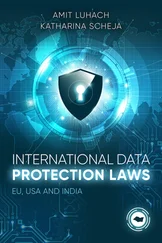U.S. Export Tax Incentive through an IC-DISC
IC-DISC
With the repeal of the extra territorial income exclusion, the IRS noticed the resurgence of the domestic, international sales corporation (DISC) in the form of an interest charge DISC (IC-DISC). The relevant tax provisions for the IC-DISC are generally within IRC Sections 991 through 996, and corresponding regulations, and is commonly referred to as the last practical tax incentive for U.S. exporters . If certain requirements are met under the IRC and the regulations, the IC-DISC may provide U.S. exporters significant benefits including a qualified dividend tax rate versus an ordinary income tax rate, deferral of IC-DISC income from current taxation (up to $10m annual revenue limit), increased cash flow for exporter due to tax savings, a lower ETR, and elimination of double taxation in C corporations.
The IC-DISC is a tax incentive whereby U.S. exporters exporting U.S. products to foreign destinations are able to receive the qualified dividend tax rate currently at 20% plus the 3.8% net investment income tax imposed by Section 1411, for a total of 23.8% maximum federal income tax rate. This is a considerable reduction from the maximum federal income tax rate for individuals currently at 40.8% (maximum federal individual income tax rate 37% plus 3.8% net investment income tax).
The DISC generally determines its income on a transaction by transaction (T by T) basis or if it so elected it could determine income on groups of transactions. Whether it used the T by T method or grouped their transactions, the DISC’s income is based on one of the following three pricing methods:
1 Four percent of qualified gross export receipts plus 10% of the DISC’s export promotional expenses attributable to such receipts
2 Fifty percent of combined taxable income (CTI) plus 10% of the DISC’s export promotional expenses attributable to such income
3 Taxable income based upon the sale price actually charged but subject to the rules under Section 482 transfer pricing rules
| Example — ABCUS company IC-DISC high-level cost-benefit |
|
|
Export earnings without IC-DSIC |
With IC-DISC |
| Standard |
ABCUS 2013 “Taxable”export income |
$3,600,000 |
$3,600,000 |
| 50% CTI method |
$1,800,000 |
$1,800,000 |
| Individual standard & QD rate |
37.00% |
20.00% |
| After tax cashfor owners |
$1,134,000 |
$1,440,000 |
|
Cash tax savings |
|
$306,000.00 |
Ownership and organizational structure
An IC-DISC is a separate (legal) C corporation that acts as a sales commission agent for a U.S. agricultural, food manufacturing, or distributing exporter (the exporting entity). The IC-DISC is by design and by operation of tax law within the IRC more form over substance. In the IRS audit guide, it is apparent that the form, including documentation and a completely thorough and accurate IC-DISC [formal] election, are crucial for the qualification and maintenance for the IC-DISC tax beneficial status.
An IC-DISC does not need employees or office space and does not have to perform any services or participate in any sales to earn a commission. The entity is required to maintain a separate set of books and records, including a separate bank account. It may have only one class of stock and must, at all times, have stock outstanding with a par or stated value of at least $2,500. Any type of entity or individual can own an IC-DISC. In most situations, ownership should be held by an individual or flow-through entity (an LLC, partnership, or S corporation) for the greatest tax benefit. If the exporting entity is one of these pass-through entities, the IC-DISC can even be formed as a subsidiary. However, if the exporting entity is a C corporation, the IC-DISC should be set up as a sibling to the exporting entity rather than a subsidiary, and it should generally be owned by the exporting entity’s individual shareholders.
Note that the shareholders of the IC-DISC do not need to be the same as the shareholders of the exporting company. An IC-DISC can be used to provide a benefit to key employees or as a tool in estate and or succession planning.
An IC-DISC is also allowed to have foreign shareholders as long as the foreign shareholder agrees that any distribution (actual or deemed) is income effectively connected with a U.S. permanent establishment. The dividends paid from an IC-DISC to its shareholders are generally considered to be foreign-source income. This makes the use of an IC-DISC particularly valuable to U.S. shareholders with passive foreign tax credit carryovers.
An IC-DISC is categorized as a domestic C corporation that is tax exempt for federal income tax purposes. However, to obtain this tax exempt status, the corporation must file Form 4876-A, Election to Be Treated as a DISC, within 90 days of its first taxable year. If the corporation elects to be treated as an IC-DISC moving forward, then the election must be made within 90 days before the beginning of the first taxable year of the DISC. The election must be signed by all shareholders as of the effective date of the election. Once made, the election is effective for all subsequent years until it is revoked by the corporation. Based on foreign sales of products manufactured, produced, grown, or extracted in the United States, the exporter pays a commission to the IC-DISC and then deducts the commission from its ordinary business income. This results in a deduction at ordinary tax rates. The IC-DISC receives the commission without having to pay federal tax on the income. In most cases, the IC-DISC then distributes this cash as a dividend to its shareholders. As long as the shareholders are individuals or pass-through entities such as S corporations or partnerships, the dividend is taxed at the favorable qualified dividend tax rates.
For example, say an S corporation hops grower has domestic gross receipts of $25m and foreign gross receipts of $15m for a total of $40m. The cost of growing, harvesting, drying, and bailing the hops — which will be sold both domestically and overseas — leaves the gross margin at $8m. Take out general expenses, and the grower’s net taxable income is now $3.75m domestically and $2m internationally. To determine the permanent federal tax savings using an IC-DISC, start by calculating its commission, which in this case can be either: 50% of export net income or 4% of export gross receipts (limited to export net income).
In this example, the first method gives us a commission of $1m (50% of $2m, the grower’s net taxable international income), and the second gives us a commission of $600,000 (4% of $15m). Generally, the taxpayer will want to choose the larger of the two amounts for the greatest tax benefit. In this case, the first choice results in a $1m commission paid by the grower to the IC-DISC. As a result of this commission, the grower’s taxable income is reduced by $1m. Because the grower is an S corporation, its shareholders report this income (now reduced by $1m) on their individual income tax returns. Assuming the shareholders are in the top tax bracket (and taxed at 37%), the commission payout results in a federal tax reduction of $370,000 in total for the shareholders. The $1m paid to the IC-DISC is taxed to the IC-DISC’s owners (when paid or deemed paid) as a qualified dividend at the 23.8% rate (factoring in the 3.8% NIIT tax), resulting in tax of $238,000. The difference between the ordinary income tax saved by the individual shareholders and the qualified dividend tax liability incurred by the IC-DISC results in a tax savings of $132,000. The IC-DISC may also choose not to pay a dividend to its shareholders. In this case, an interest charge would apply to the deferred tax (hence the entity’s name). The interest charges are based on Treasury bill rates, so at this time the potential interest charges are small. There are also deemed distribution rules related to qualified export receipts that exceed $10m; these rules can result in shareholders being taxed on the DISC’s earnings without there being an actual distribution.
Читать дальше












